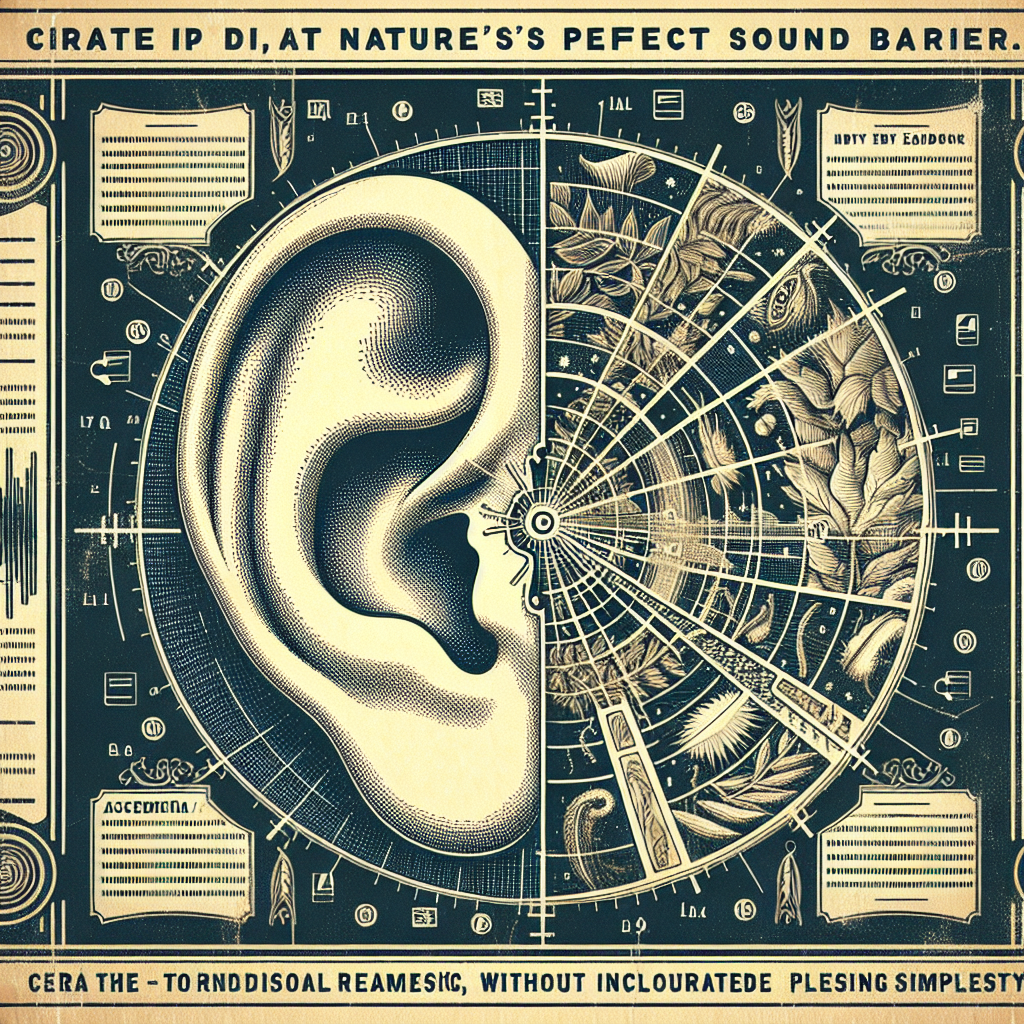Eardrum: The Sonic Gatekeeper of Human Perception
Imagine a medieval castle with formidable walls designed to ward off invaders. Now, translate that image into your body—it turns out you have something quite similar protecting one of your senses. Behold the eardrum, also known as the tympanic membrane, the medieval gatekeeper and mighty defender of our auditory realm!
What and Where is the Eardrum?
Officially known as the tympanic membrane, the eardrum is a thin, cone-shaped piece of tissue located at the end of the ear canal, forming the boundary between the outer ear and the middle ear. It may be small, with a diameter only about 8-10 millimeters, but this tiny membrane plays a big role in our capacity to hear and interpret the world around us. So, where exactly is it situated? Imagine a cozy corridor; at the end lies a fine silken curtain—which is your eardrum—delicately vibrating to the tunes of life itself.
Who Discovered the Eardrum?
The intricate workings of the eardrum have piqued human curiosity for centuries. Ancient civilizations were already recognizing its unique function—albeit without modern instruments. It wasn’t until the Renaissance, however, that scientists like Andreas Vesalius began to illuminate its structure in greater detail. Fast forward into modern times, and research into the eardrum is ever-advancing, thanks to innovative techniques such as microscopy and imaging technology.
How Does the Eardrum Work?
The main function of the eardrum is to act like a translator between the outside world and our brain. It does this by catching sound waves that enter through the ear canal and then vibrating in response. These vibrations then move three tiny bones in your middle ear, known as the ossicles. These bones amplify the vibrations and transmit them to the cochlea, a snail-shaped tube in the inner ear, where they’re transformed into neural signals. Finally, these signals are shuttled off to brain centers specialized in processing sounds, allowing us to experience everything from the cheerful chirping of birds to the soul-stirring chords of a symphony.
Why is the Eardrum Important?
Have you ever stopped to consider what life would be like without the ability to hear? The entire auditory experience hinges on the eardrum, which is why this small patch of skin demands such reverence. From locating sources of sound to engaging in communication and social interaction, the eardrum is front and center in making these essential tasks possible. It's like a backstage crew member whose diligent work ensures that the auditory show goes on.
Common Eardrum Problems
Unfortunately, the eardrum isn’t invincible. Various problems can affect it, such as perforations, infections, and trauma. A perforated eardrum—perhaps punctured due to a sudden loud noise or an unfortunate accident—often results in hearing loss or vulnerability to ear infections. Otitis media, a fancy term for a middle-ear infection, can cause inflammation that puts undue stress on the eardrum. Nevertheless, here’s the good news: eardrum issues can often be effectively treated medically. Antibiotics for infections, or even minor surgical interventions like tympanoplasty, can patch up perforations, allowing you to return to the marvel of unhindered hearing.
Advancements in Eardrum Repair and Research
Science and technology are racing forward on the eardrum front, unlocking secrets and introducing new ways to treat common problems. Cutting-edge research involving 3D printing and bioengineering is exploring new possibilities for eardrum repair. Scientists are also experimenting with artificial tympanic membranes made from innovative materials designed to not only mimic the original eardrum but also potentially outperform it.
Moreover, research into stem cells and regenerative medicine holds promises that have sparked hope and optimism among medical professionals and patients alike. These advancements are creating avenues to not only repair but regenerate the eardrum’s cellular structure, which might one day restore hearing entirely without the need for invasive procedures.
Fun Facts about the Eardrum
- Resilience in Structure: Despite its delicate appearance, the eardrum typically heals faster than most other tissues in the body.
- Fascinating Physiology: The eardrum vibrates at different speeds depending on the pitch of the sound. It can vibrate as slowly as a few hundred times per second for low-frequency sounds to as fast as several thousand times per second for high-frequency sounds.
- Shhh! Listen Closely: In a quiet environment, a healthy eardrum can detect sounds as faint as 0 decibels, the threshold of hearing.
An Analytical Outlook
In a world perpetually bombarded by noise, let’s express gratitude for this small yet mighty membrane that faithfully converts vibrations into the rich tapestry of sounds that flavors our lives. While it is susceptible to its own set of challenges, the eardrum nonetheless opens a portal to profound auditory experiences, proving yet again how marvelously intricate the human body is. So, the next time you find yourself lost in your favorite melody or responding to the delightful laugh of a friend, take a moment to appreciate your eardrum—an unsung hero in the concert of life.

